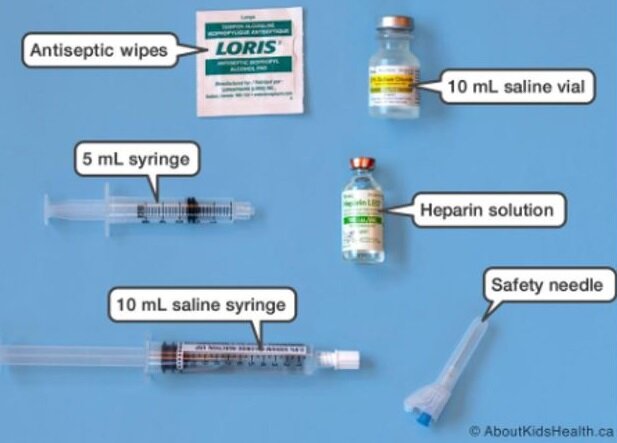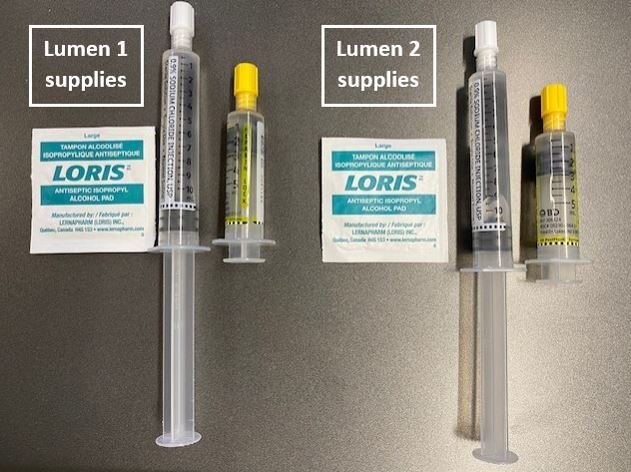ALERT: Why use single-use supplies when heparin locking a Central Venous Access Device (CVAD)?
Connected Care Quick Hits are up to date and evidence based recommendations for the care of children with medical complexity & technology dependence, from hospital to home.
ALERT: Why use single-use supplies when heparin locking a Central Venous Access Device (CVAD)?
SITUATION:
This QuickHit! is informed by virtual visits where home care nurses have asked if the same normal saline syringe can be used to flush both lumens of a Central Venous Access Device (CVAD) when heparin locking.
BACKGROUND:
Children discharged from hospital to home with CVADs are at risk for Central Line Associated Blood Stream Infections (CLABSIs). These infections can occur when microorganisms enter the blood stream either through the insertion site of the CVAD (key site) or through the access caps (key part).
Aseptic technique is the process of keeping away harmful microorganisms. Using Aseptic Non-Touch Technique (ANTT) when accessing and heparin locking CVADs, in conjunction with single use supplies can help prevent CLABSIs.
ASSESSMENT:
The supplies needed to heparin lock a CVAD depend on the number of lumens it has. The image below outlines the typical supplies needed to heparin lock a CVAD with one lumen. A prefilled heparin syringe, adjusted to the appropriate dose, may be used instead of a multidose heparin vial.
Once syringes are used to access or heparin lock one lumen, the syringe must be discarded. Reusing the same normal saline flush or heparin syringe on separate lumens increases the risk of contamination and subsequently the risk of CLABSIs.
RECOMMENDATION:
For this practice, Connected Care recommends to use single-use supplies for heparin locking CVADs. This includes:
NEW heparin syringe for each lumen (prescribed dose)
NEW normal saline flush for each lumen
NEW alcohol swab for each lumen
If a multi-dose vial is being used to draw up heparin, a new 5 ml syringe is used for each lumen. Multi-dose heparin vials are to be dedicated to a single patient, stored at room temperature and discarded 28 days from opening.
For additional information on how to heparin lock a central venous access device, click here to visit AboutKidsHealth, or consider a Connected Care Live consult















